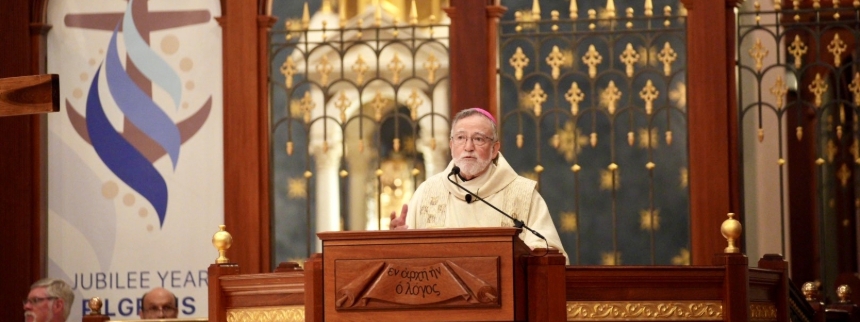
The gospel narrative does not focus on the moment or the manner of the Resurrection of the Lord. We are only made aware of the resurrection by the first testimonies of the disciples who discover the empty tomb during the early glimmers of dawn on the first day of week. Their recollections were filled with perplexed incredulity. Their minds were still clouded and saddened by the raw, vivid memories of the sorrowful events of the recent passion of their dear teacher and shepherd. Slowly, with the angelic messages and later the real presence of Jesus himself, the dawning realization of the Lord’s resurrection became clear to them.
Consider for a moment what it meant for the women, Simon Peter, and the others to comprehend the mystery they witnessed. Resurrection had not happened before. As Paul exclaimed much later following his own conversion, Jesus was the firstborn of the dead. Upon seeing the Risen Lord, to what could they compare that? If someone had never seen an airplane flying across the sky, what would they say about that? The Resurrection of the glorified Jesus was a vastly more incomparable experience, beyond even the disciple’s own imagination. The risen Jesus possessed a glorified body. Passing from death to life, he passed from time to eternity. He assumed his place eternally at the righthand of the Father.
The only link, but a vital link, between the risen Jesus and those first witnesses was his humanity. In the Resurrection, Jesus did not abandon his humanity. Jesus, human and divine suffered the agony of Calvary and was raised from the dead by the Father. The human nature he shared with us, the human nature that suffered and died for us was raised up to share in the glory of the divine.
It is this human nature now glorified by the will of the Father that the women and the apostles recognized because they knew Jesus. He was familiar to them. They knew his voice; they recognized his smile. The same Jesus whose eyes looked into theirs as he broke the bread and said to them, “take and eat, this is my body, the same tenderness that extended the chalice saying, “take this and drink; this is my blood,” following the resurrection looked mercifully upon them again and said, “Peace be with you.” The eternal Son of the Father brought heaven to earth into the company of the disciples, hiding beyond closed doors still shaking with fear. The voice they knew said to them, “Do not be afraid; it is I. Peace be with you. Receive the Holy Spirit.”
The Easter experience of the first witnesses continues in the Church. Jesus, who lives for all eternity in divine communion with the Father and the Holy Spirit, brings heaven to earth. He shares his glorified humanity with us so that we can share in his divinity. The Church is the mystical body of Christ because Jesus shares his glorified body with us. As members of his body, we share in his spirit. The testimony of the women who went to the tomb, the testimony of Peter, Thomas, and the other Apostles continues to be proclaimed not because their experience was unique but because their experience lives on in the Church. The risen Jesus comes in mystery and is present amidst his Church so that those eternal words may echo in our time and in this place: “Do not be afraid; it is I. Peace be with you. Receive the Holy Spirit.”
Pray that like those first witnesses, we may grow in our personal familiarity with the Lord. The daily practice of prayer, the regular reception of the Sacraments, especially of Confession and the Eucharist, the habit of penance and charity – by all these ways we will walk with the Lord; we walk like the Lord. We may then come to hear his voice not as a stranger but as a friend. We will recognize his tender mercy and embrace in time the eternity of his merciful love for us.

